A vital point in video game history is 1947, this was the era in which it first started when Thomas T. Goldsmith, Jr & Estle Ray Mann patented the idea for the Cathode Ray Tube Amusement Device”. This device worked by connecting a cathode ray tube hooked to an oscilloscope displa, this was the earliest form of an interactive piece of technology at it’s time and it was not sold to the public. The first game on this device was very basic it indulges you to fire a gun at a target. During the 1950’s other fairly basic games were made playable through an interactive systems, games such as Chess, Naughts and Crosses (OXO), Black Jack and Tennis. These were all huge achievements but one in particular that shown a big growth in the field was in 1956 when the Checkers program written on the IBM-701 computer and created by, Arthur Samuel’s defeats checkers master on national TV showing the intelligence of these programs giving it some mainstream success. It doesn’t stop there either later on in 1957 Alex Bernstein write a new chess program on the IBM-704 that can predict the next four moves of it’s opponent. This just shows the advancement of the technology in such short time.
This takes us to the 1960’s which is an iconic year because the very first computer based game ‘Spacewars!’ was made, by MIT (Massachusetts Institute of Technology) student on a TX-0 (‘Transistorized Experimental computer zero’ one of the earliest fully transistorized computer). While the success of video games is slowly rising, Ralph Baer is thinking up of the next idea to revolutionise the video game market. He thought of the idea while waiting fora colleague at New York bus station in 1966 and later that year he writes down notes for the development of television gaming. 1967-8 he patents his idea and creates a prototype of the console and titles it the ‘Brown Box’.
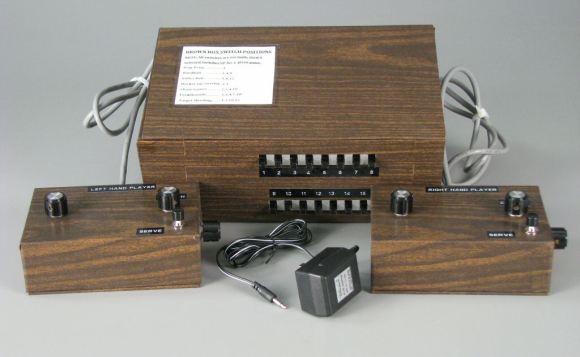 Based on his ideas Magnavox releases Odyssey the first home video game system.
Based on his ideas Magnavox releases Odyssey the first home video game system.
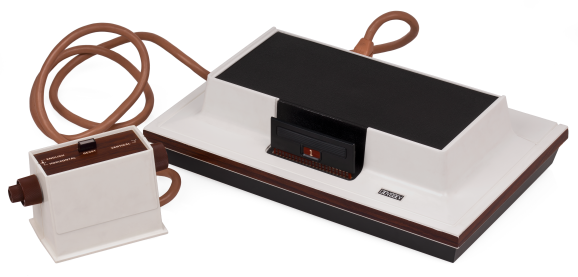 In 1971 Nolan Bushnell and Al Alcorn of Atari developed ‘Pong’ a table tennis type game that bears resemblance to the tennis game created for the Odyssey, which created a lot of controversy. However none the less the game was a huge monetary success selling over 19,000 games, the machines even stopped working at one point because too many quarters were being jammed in the machine, this is noted the birth of arcade gaming. In 1978-80 was the release of two games that revolutionised the arcade gaming market emptying the pockets of millions of user. Space Invaders was the first one to release leaving Japan a shortage of 100-Yen coins and PacMan it’s follow which was initially a stand alone arcade game but later that year was brought to the home console Atari 2600. These games were apart of the ‘Golden Age’ which is the peak era in arcade gaming where it grew in popularity and technological innovation, thus gaining a lot of mainstream success.
In 1971 Nolan Bushnell and Al Alcorn of Atari developed ‘Pong’ a table tennis type game that bears resemblance to the tennis game created for the Odyssey, which created a lot of controversy. However none the less the game was a huge monetary success selling over 19,000 games, the machines even stopped working at one point because too many quarters were being jammed in the machine, this is noted the birth of arcade gaming. In 1978-80 was the release of two games that revolutionised the arcade gaming market emptying the pockets of millions of user. Space Invaders was the first one to release leaving Japan a shortage of 100-Yen coins and PacMan it’s follow which was initially a stand alone arcade game but later that year was brought to the home console Atari 2600. These games were apart of the ‘Golden Age’ which is the peak era in arcade gaming where it grew in popularity and technological innovation, thus gaining a lot of mainstream success.
Jumping to 1985 where we saw the release of the NES (Nintendo Entertainment System) which was an 8 bit console that first introduced the ‘joypad’, this gave birth to some of the biggest franchises that are still relevant till now such as Super Mario Bros, Zelda, Dragon Quest etc. After the NES’s long lasting success Nintendo venture into another un-touched market ‘Handheld Gaming’ where it released the Game Boy, although it wasn’t the first handheld device (10 years previous Milton Bradley introduced Microvision) it charmed the market with its easy use and long lasting battery life.
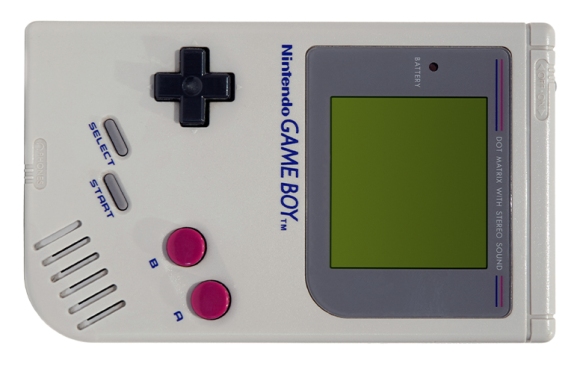
In 1995 Nintendo had two newer rivals, the PlayStation and the Sega Genesis both introducing the CD (Compact Disk) which allowed more data to be held than cartridges thus allowing better performance and graphics. However with the Playstations fairly cheap retail price of a $100 making it the cheapest console on the market at the time, made it a very easy choice for it’s consumers thus slowly weakening Segas home console business. Then in 2000 when sony released the Playstation 2 which dominated the home console market, Sega exited the market for good.
Arcade
During the 1970’s to early mid 90’s Arcade Machines were extremely popular at the time, being one of the main sources of virtual entertainment. It worked by user inserting coins of there currency into the machine in return for a chance to play on the selected game and quite often try to beat someones high score. Usually when you die or when your time runs out your required to insert more coins into the machine to keep the game on going.
A few disadvantages of arcade gaming were the fact you had to pay everytime you went on, so even if it’s your first time you’ll have to keep spending money until you get better basically paying for your own experience. Also the fact you always had to leave the comfort of your home to go to the nearest ‘Amusement Arcade’ and even when you reach there you’ll most likely be waiting in que for the most popular games.
The more earlier arcade game graphics used to be vector based, meaning that visually the game was only made up of simple geometric shapes. Games like Asteroids, Quantum & Black Widow are good examples of vector based games. Below is a clip I found on YouTube of someone playing ‘Asteroid’.
When the whole Arcade scene started to become obsolete, they moved all the popular games to the home console. Then when these consoles became obsolete, software became available on the PC platform to emulate this retro games. What emulate means is when you duplicate software so it’s functions work on another platform or computing system, the correct terminology for this is called ‘Arcade Emulator’
Console
Since the arcade scene we have seen a lot of home consoles come and go, but the main three that are still very successful in the home console field are the PlayStation, Xbox and Nintendo devices. The reason why is because they all bring something different to the field giving each one its advantages and disadvantages. With the Playstation first being released in 1994 was a revolution to the field because it was one of the first consoles to introduce CD’s (Compact Disks), this allows more data space for games allowing longer lasting and possibly better performing games. For it’s time this was good but it did have it’s disadvantage like the minimal space on the console it’self and the memory cards were limited to only 128k, where you found yourself constantly deleting previous data or buying new memory cards. This issue was later fixed with the Playstation 2 which was released in 2000, where the memory cards for this device held up to 8mb which might not seem like a lot now but back then was a massive improvement. It also came with many other advantages such as:
- Dual shock 2-compatible vibration feedback
- Macro button for enhanced programmability
- Backward compatibility with PlayStation One games
- Introduced DVD functionality
However a huge disadvantage for the PS2 was that it’s online functionalities wasn’t as good as the Xbox which released a year after in 2001. Allowing you to play your friends in the comfort of your own home over a broadband connection, revolutionising the online multiplayer experience with popular games such as Halo which gained a lot of mainstream success. Other advantages of this console were that because it had a similar architecture to PC’s it made games easier to develop for the Xbox. Also it had four controller ports in comparison to the PS2 that only had two ports.
Although it was a powerful console and good runner up with the PS2, being the first american console on the market since the Atari Jaguar, made it very difficult to compete with PlayStation which is an already well established brand since it’s predecessor the PS1 and also Nintendo with it’s track record of popular consoles/devices. An even bigger disadvantages was the late incoming, reaching a year later than other consoles the PS2 already won over majority of the market.
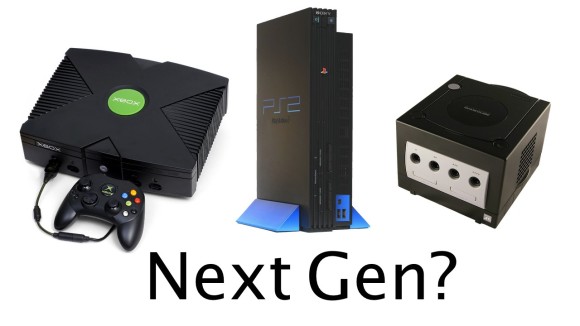 Another rival at the time was the Gamecube, which didn’t really appeal to the ‘hardcore gamer’ although they had Zelda & Metroid Prime etc. Majority of the games were aimed at the casual gamer having popular titles like ‘Mario Party, Donkey Kong Jungle Beat and animal crossing etc. Even now with the 3rd generation of consoles, the Wii which was released in 2006 is still aimed at the casual gamer. However with there unique controller the ‘Wii Remote & Nunchuck’ this revolutionised how we play games making it more of an interactive experience for the user. Also all the games were fairly easy to grasp which opened it up to a broader market that targeted the young and the old. This alone made the Wii a huge success, but it’s still missing a vital market the ‘Hardcore Gamer’. In comparison to the PS3 and the Xbox 360, the Wii is a less powerful console, the graphics generally weren’t that good, all the games were relatively similar and users usually got bored of the console after awhile mainly due to it’s poor online service that made a lot of games obsolete once completed. This is where consumers would change to the PS3 or Xbox 360, both incredibly powerful consoles that provided amazing online services. Firstly the PS3 which was released in 2006 uses Blu-Ray disks which have a bigger storage medium allowing more detailed and compact games, which is a huge improvement from the CD’s they used on the PS2. Also by having Blu-Ray compatible games, the console also acted as a Blu-Ray player which was a huge advantage at the time because it was the first device to incorporate this new technology. It had the PSN (Play Station Network) which was an online market for distributing games, DLC and movies, also making it a lot easier to access with the built in Wi-Fi. However a huge disadvantage of the PS3 was when it was first released the retail price was £500, which was way more expensive than it’s other competition. Later down the line they did correct by bringing out slimmer and cheaper consoles. Another disadvantage was the fact it wasn’t backward compatible with PS2 games, although again they corrected this by re-releasing some titles as HD remakes but this was only done for a few popular titles.
Another rival at the time was the Gamecube, which didn’t really appeal to the ‘hardcore gamer’ although they had Zelda & Metroid Prime etc. Majority of the games were aimed at the casual gamer having popular titles like ‘Mario Party, Donkey Kong Jungle Beat and animal crossing etc. Even now with the 3rd generation of consoles, the Wii which was released in 2006 is still aimed at the casual gamer. However with there unique controller the ‘Wii Remote & Nunchuck’ this revolutionised how we play games making it more of an interactive experience for the user. Also all the games were fairly easy to grasp which opened it up to a broader market that targeted the young and the old. This alone made the Wii a huge success, but it’s still missing a vital market the ‘Hardcore Gamer’. In comparison to the PS3 and the Xbox 360, the Wii is a less powerful console, the graphics generally weren’t that good, all the games were relatively similar and users usually got bored of the console after awhile mainly due to it’s poor online service that made a lot of games obsolete once completed. This is where consumers would change to the PS3 or Xbox 360, both incredibly powerful consoles that provided amazing online services. Firstly the PS3 which was released in 2006 uses Blu-Ray disks which have a bigger storage medium allowing more detailed and compact games, which is a huge improvement from the CD’s they used on the PS2. Also by having Blu-Ray compatible games, the console also acted as a Blu-Ray player which was a huge advantage at the time because it was the first device to incorporate this new technology. It had the PSN (Play Station Network) which was an online market for distributing games, DLC and movies, also making it a lot easier to access with the built in Wi-Fi. However a huge disadvantage of the PS3 was when it was first released the retail price was £500, which was way more expensive than it’s other competition. Later down the line they did correct by bringing out slimmer and cheaper consoles. Another disadvantage was the fact it wasn’t backward compatible with PS2 games, although again they corrected this by re-releasing some titles as HD remakes but this was only done for a few popular titles.
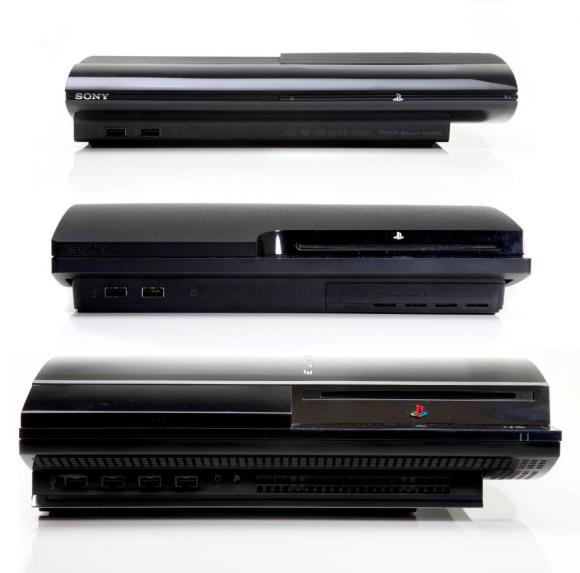
Unlike the previous generation of consoles the Xbox 360 was the first console to be released in 2005 getting a head start in the market. Originally releasing with a retail price of around £300 making a lot cheaper than the PS3 by putting it in an affordable price bracket. At the time of launch it had a better games library, mainly including a lot of FPS’ due to it being a western console. However Eastern consoles such as PlayStation and Nintendo include a lot of party and RPG games, which is primarily the reason why the Xbox wasn’t as successful in Japan and China in comparison to the UK and USA. Another advantage of the Xbox is it’s ‘Xbox Live’ feature including a large library of downloadable content than the PS3 that ranged from movies, music, games, TV shows etc. Even when playing online or just generally socialising with online friends was made a lot simpler in comparison to Ps3 where you had to go through various different settings just to talk to someone. Also the infamous achievement system, which rewards gamers for doing tasks in game and giving you points for each task you do. Shortly after the Ps3 copied this idea and titled it ‘Trophies’ instead.
On the other referring back to ‘XBOX Live’ you had to pay a subscription fee which was fairly expensive in comparison to PS3 which had a completely free online system. Also later down the line there was frequent problems with the console, where a red ring would appear around the start up button making your console shut down or overheat. This was the biggest disaster in the history of Xbox forcing some gamers to switch over to Ps3 due to how poorly Microsoft handled this situation. Another disadvantage was when it was first releasing it didn’t include a built in Wi-fi, players had to be connected via a wired extension or buy a Wi-Fi adapter. Which was later integrated into the newer releases of the Xbox 360 consoles.
Mobile Gaming
As of recently mobile gaming has took of to be a huge world wide success, due to smart phones that allow you to download applications. The reason I think it has took off so quick is because the games are usually quite simple and have a instant download and play feature where you don’t even have to read the instructions. This method of gaming is similar to the Wii, it’s targeted at the ‘casual gamer’, plus it’s on everyones most relied on device the mobile phone.
Due to things gaming markets like the App Store or Android Market we have witnessed some world charting games like Angry birds, Temple Run and Draw Something etc. Also a major advantage for the consumer of mobile gaming is that the games are usually cheap or completely free and theres a huge variety of games so you’ll definitely find something that meets your specifications.
A specific phone that triggered off handheld mobile gaming was the ‘Nokia N-Gage’ a design which was inspired by the ‘Game Boy Advance’ to combine both the functionalities of a mobile and gaming device. Unfortunately this wasn’t as successful as Nokia would have liked because the button configuration wasn’t practical for both a mobile phone and handheld console, however after we saw the rise of smartphones. A limitation to mobile gaming on a whole is that you can’t spend long periods of time on it because after awhile it can be quite strenuous on the eyes. Also when playing games on your phone it takes a lot of your battery life.
Another notable device to do with mobile gaming is the PDA, which stands for personal data assistant and can also be used as a gaming platform. A limitation of this is the processor speed would be a lot slower than that of a mobile phone therefore gaming would lag and it would not be able to cope with visually demanding games. Another limitation of PDAs is that they are quite expensive therefore it is not practical to use for gaming

Television
Literally everything’s becoming interactive now, even the way we watch TV. Now if your a Sky user you can easily press the red button and gain access to a list of games while watching TV. A good example of this is in the ‘Sky Interactive’ department theres a game called ‘Bee Hive Bedlam’, where the user has to catapult flowers to the right colour. However the catch to this is you get to play the first few levels free but after that it would prompt you to pay to carry on.
You have to use the Sky remote to control the game, a limitation of this is that there isn’t a wide range of controls apart from select and the directional buttons. Thus not allowing you to creative any complex or different feeling games.
How I receive these types of games is through my satellite connection, which is a method of television programming where my outdoor antenna (Satellite Dish) receives data/information from a communications satellite in space. Another method of television programming is ‘Cable’ which involves coaxial or fiber-optic cables that transmit radio frequency signals to my TV. This is often seen as the progressor to ‘Broadcast Television’ which radio frequencies being sent over the air to TVs with antennas attached on the top.
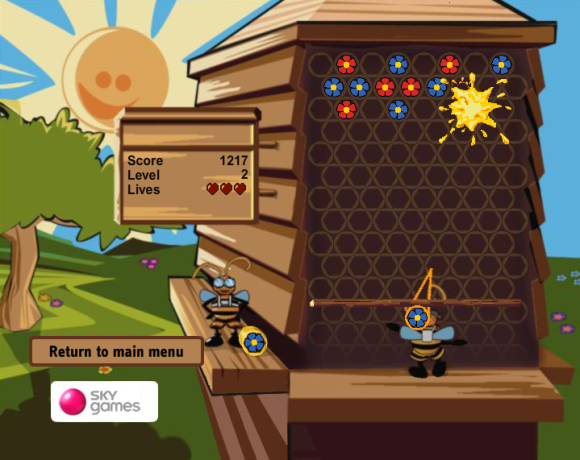 PC Gaming
PC Gaming
Computers are used for gaming however they require high end graphics, RAM, hard drive. You have to buy accessories such as joysticks in order to give you more control when playing games such as battlefront where you have to control the movements of your character. You can also games online with other players furthermore this may have an effect on game play depending on the speed of your connection.
Games that are visually demanding require a graphics card that would be able to cope with the game in addition you would also need a high end processor and RAM and this would cost a lot of money if you built a gaming computer from scratch however you can also gaming computers such as alien ware which are made especially for gaming. These PCs typically have a high amount of RAM, high end graphics cards, cooling system and very fast processor to cope with all the gaming demands. They also require a high amount of electricity to run efficiently. Another limitation of this is the costs due to the fact that gaming PCs generally start from £500 upwards and then you would have to buy games as well furthermore many people would not be able to afford this.
PC: features, eg offline, online; limitations